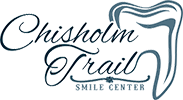Pew, pew! When we think of lasers, we may be tempted to think of laser blasters from our favorite science fiction movies, but the truth is that lasers have led to some phenomenal advances in the medical field.
You probably know someone who has had laser vision correction, and surgical lasers can cut tissues more precisely than scalpels. Lasers can cauterize tissues, as well, letting us recover faster from surgical procedures. Dentistry is no exception from these innovations, and lasers have been used in this field for more than two decades. As laser technology has advanced, so have the ways we can care for and repair your teeth.
What is Laser Dentistry?
All lasers work by harnessing energy into focused beams of light. At varying frequencies, concentrated light can accomplish a number of different tasks. They can cut soft and hard tissues; they can illuminate teeth in ways that ordinary lights cannot; and they can kill bacteria and break down plaque more efficiently than metal tools.
Some of the Benefits of Laser Dentistry
Laser tools may be more expensive than traditional dental tools, but many dentists have adopted their use because they offer several benefits:
- Lasers can reduce the need for needle injections in some procedures.
- The use of lasers is quieter than many traditional tools, which can reduce anxiety in patients who are triggered by noises.
- Lasers allow for more conservative cavity treatment, so dentists can preserve more healthy tooth matter.
- In soft tissue treatments, lasers minimize bleeding and swelling and reduce healing times.
Commonly Used Laser Dentistry Treatments
Laser dentistry tools have a number of uses. All of them can make the patient’s experience in the dental chair more comfortable, and the treatments more effective. Here are some of the ways lasers may be used in a dental office:
Easier Filling Treatments – With laser-based “drills,” filling are quieter and there is less need for anesthetic injections. With lasers, a filling that usually requires Novocain can be accomplished without a needle jab—plus, there are fewer jarring vibrations and loud noises.
Cavity Detection – Laser lights can be used to spot cavities and spots of demineralization before a cavity is formed. This makes cavity detection faster than traditional means, and more efficient.
Periodontal Treatments – When a patient has periodontal pockets due to gum disease, those spaces must be cleaned of bacteria and calculus regularly. With traditional tools there is more trauma to the gum tissue during deep cleaning, but lasers allow dentists to kill bacteria and clean the teeth more conservatively.
Faster, Better Root Canal Therapy – During a root canal therapy, the dentist must thoroughly sterilize and remove tissues from the inside of the tooth (pulp chamber). Lasers let us do this with greater precision, so there is less of a chance the root canal will fail at a later date.
Faster Teeth Whitening – Laser lights can be used during in-office whitening treatments to speed up the chemical processes that remove stains from the teeth.
Visit Chisholm Trail Smile Center to Learn More
As a dental practice that puts patient comfort first, we have adopted laser tools to give you a better experience. Ask Dr. Matthew Bridges or a member of our staff to explain the laser tools we use at Chisholm Trail Smile Center.







